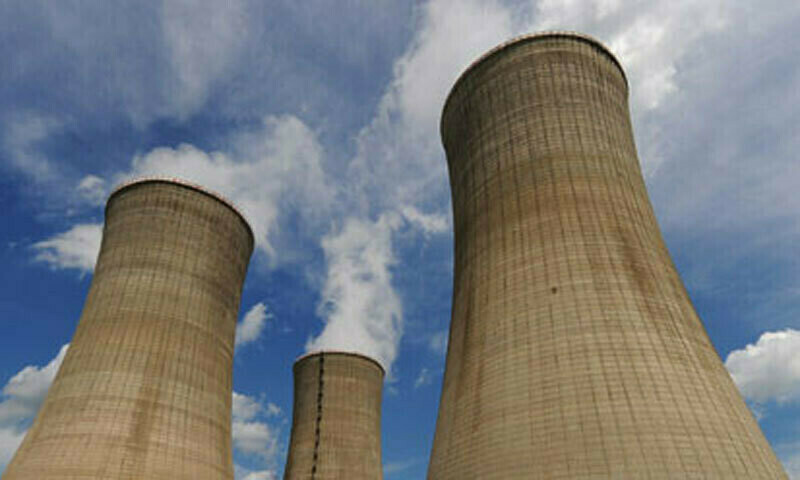
[ad_1]

ISLAMABAD: With an operational generation capacity of 3,262 megawatts, Pakistan has increased the share of electricity from nuclear power plants to a record 17.4 per cent in 2023 from 16.2pc in 2022, according to the World Nuclear Industry Status Report (WNISR) 2024.
The report financed by German Federal Office for the Safety of Nuclear Waste Management, Friedrich Ebert Foundation, Heinrich Böll Foundation, the Greens-EFA Group in the European Parliament, and the Swiss Renewable Energy Foundation has noted that the United States leads the 32 nuclear power producing nations with 96,952MW of operational capacity, followed by France with 61,370MW and China with 54,152MW. Russia, the first country to connect nuclear power to the grid in 1954 lags far behind at 26,802MW of operating capacity and still stands at 4th position followed by South Korea at 25,185MW.
The report said Pakistan currently operated six nuclear reactors with a combined (net) capacity of 3.3 gigawatt (GW). Quoting International Atomic Energy Agency (IAEA) database, it said the nuclear electricity production in Pakistan has increased from 22.2 terawatt-hours (TWh or billion kilowatt-hours) in 2022 to an all-time high of 22.4TWh in 2023. “The share of electricity from nuclear power plants increased from 16.2pc in 2022 to a record 17.4pc in 2023”.
It said Pakistan was the only country outside China where Chinese companies have built nuclear reactors. This includes two Hualong One reactors (Kanupp-2 and Kanupp-3) outside the city of Karachi and four CNP-300 nuclear reactors in Chashma, all from the China National Nuclear Corporation (CNNC). In July 2023, the Pakistani Government formally approved construction of another Hualong One reactor in Chashma (Unit 5), but an agreement to build this reactor dated back to 2017.
The Chashma-5 (CHASNUPP-5 or C-5) project is estimated to cost $4.8 billion. The majority of the cost is planned to be covered by credit from China. According to latest estimates from the head of the Pakistan Atomic Energy Commission, the project will be completed by 2030, while in its ten-year “Transmission System Expansion Plan” filed with the regulator in April 2024, the National Transmission & Despatch Company (NTDC) expects
Chashma-5 to come online 2030-31. “The project has been criticized for its high cost of power, and shelving renewable energy projects to make way for it”, the report said.
On the other hand, Pakistan’s renewable electricity capacity was 14.2GW in 2023. The most important component of this capacity is hydropower, with 10.6GW, which accounts for approximately 75pc of total installed renewable energy capacity. The total capacities of wind and solar energy are 1.8GW and 1.2GW respectively. These figures are the same as what was reported in 2022, an indication of the severe financial troubles in Pakistan. However, the Ministry of Energy has plans for a significant expansion of both wind and solar energy by the end of the decade, and project a capacity increase of 13.4GW (8.6GW of solar) by 2031.
As of June 2023, Pakistan’s total installed capacity was 45.8GW, of which fossil fuel sources constituted 28.3GW, according to local regulatory data, the report said. Renewable energy sources produced 43.7TWh gross in 2023, marginally higher than the 2022 figure of 41TWh; wind and solar energy contributed 4.4TWh and 1.2TWh respectively in 2023.
Talking about India’s operating capacity of 6,718MW, the WNISR said the Indian government, over the past few years, had been increasingly talking about small modular reactors (SMRs) and a particular focus had been on financial incentives to attract private companies into building SMRs on the pattern of traditional 220MW pressurized heavy water reactors, possibly imported from other countries.
Published in Dawn, October 8th, 2024
[ad_2]
Source link






